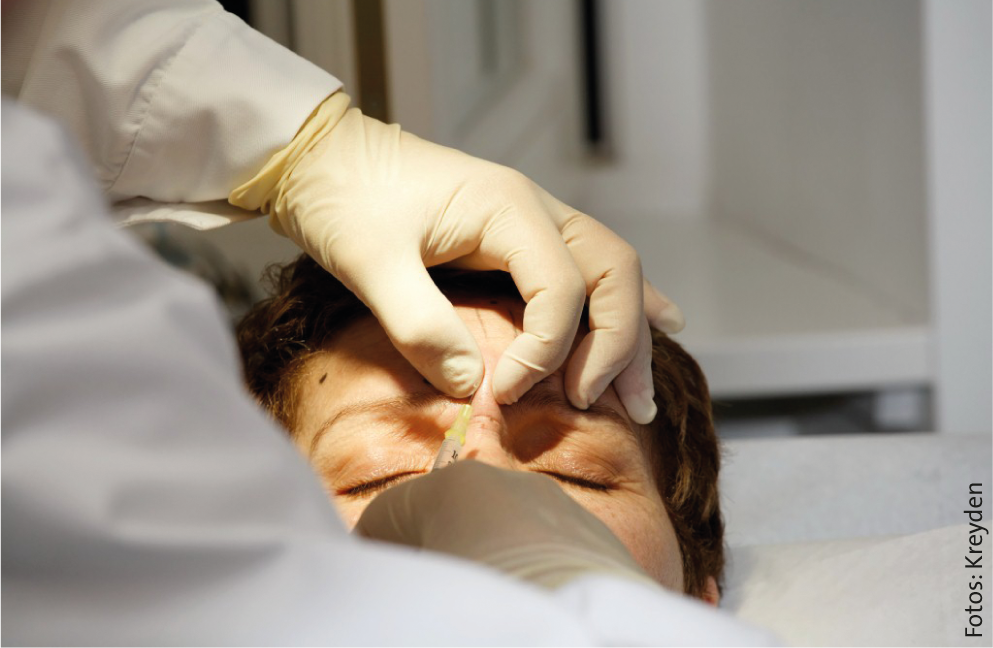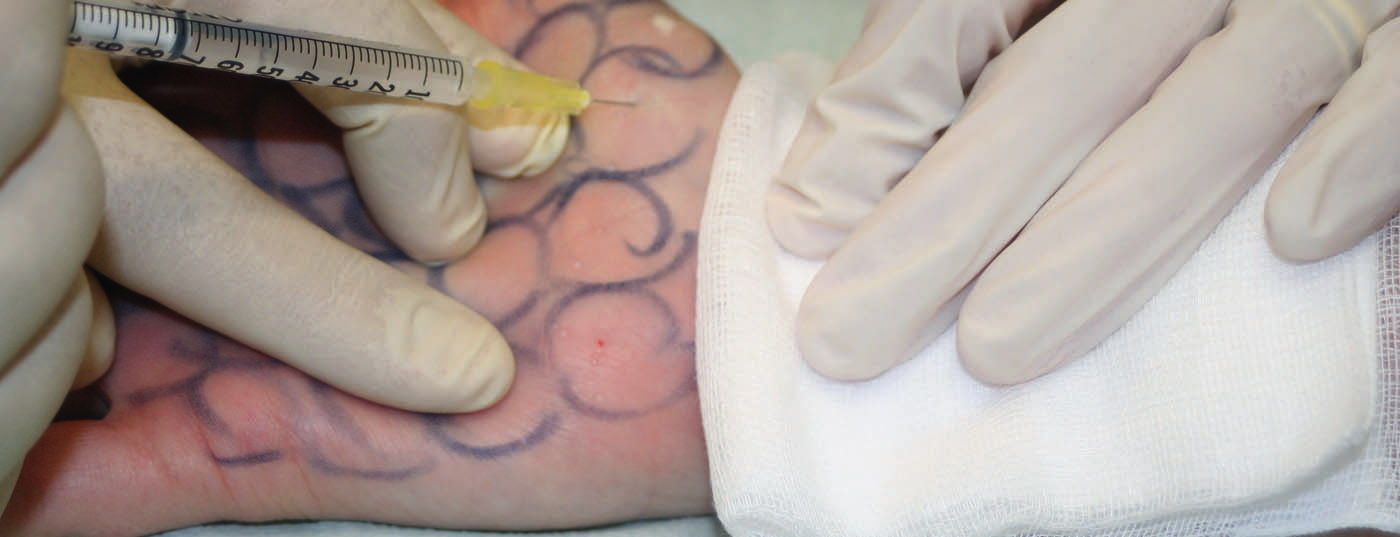In the 18th century, Christian Kerner theorized that the action of a certain toxin, botulinum, could be used to treat cramps and excessive sweat and saliva production in the organism. Kerner’s hypothesis was proven true some two centuries later with the use of botulinum in modern aesthetic dermatology.
How the initial toxin in the smoked sausage turned out to be a miracle ingredient in aesthetic medicine will be described below by means of a historical excursus.
Once upon a time…
The first case of botulism occurred in 1735. In 1793, 13 farmers in Wildbad, Germany, shared a large, smoked, uncooked blood sausage and became seriously ill as a result, killing six of them. At a wedding in 1895, also in southern Germany, uncooked, salted ham was served to the performing dance music instead of the delicious wedding food. 34 musicians poisoned themselves, three of them died! In the early 20th century, botulism was rampant in the United States and nearly destroyed the entire canned food industry (“can-disease”), so technologies were developed to control botulism in canned food.
In southern Germany at that time, it was traditional to smoke sausages instead of cooking them. In 1817, Dr. Justinus Christian Kerner (1786-1862), a Romantic poet and medical officer in Baden-Württemberg, described in the “Tübinger Blättern für Naturwissenschaften und Arzneykunde” the effect of a certain poison found in spoiled, smoked but uncooked sausages. Kerner noted even then that this toxin might well serve at a later date as “a formidable medicinal agent both for the treatment of spasms and for the reduction of excessive salivation, lacrimation, and perspiration.” However, Kerner had no real idea of the cause of this poisoning, since at that time the bacterium had not yet been discovered. This was not proven until 20 years later, when the chemist Louis Pasteur (1822-1895) demonstrated the microbial fermentation of wine, thus proving the existence of microorganisms. Looking for a living cause of an illness was anything but common practice during Kerner’s lifetime. The belief in alchemy, which was later replaced by chemistry and pharmacology, was almost boundless. Kerner, for example, initially suspected the cause of the spoiled sausages to be unhealthy feed from the fattened pigs, and later potential lightning strikes at the sausages’ smoking points.
The observation that after a certain post-mortem period a kind of wax layer forms around the corpses and the same fat layer formed equally on the sausages and hams, finally led him to the fatty acid theory. In 1822, he published a long treatise entitled “Das Fettgift oder die Fettsäure und ihre Wirkung auf den thierischen Organismus, ein Beytrag zur Untersuchung des in verdorbenen Würsten giftig werdenden Stoffes”. Because of his work in this area, botulism was then called “Kerner’s disease.” In 1882, Robert Koch (1843-1910) discovered the tubercle bacillus, for which he received the Nobel Prize in Medicine in 1905. The consequences that resulted from Pasteur’s and Koch’s work, and from bacteriology in general, were groundbreaking. For the first time in the history of medicine, the causes of numerous diseases became known, thus laying the foundations of causal therapy.
In 1897, Pierre Marie van Ermengem (1851-1932), a student of Robert Koch, was able to isolate the pathogen responsible for botulism, thus disproving Kerner’s fatty acid theory. He named this bacterium Bacillus botulinus (from Latin botulus, sausage), which today is called Clostridium botulinum (note that for this reason the active ingredient known today is called “botulinum” and not “botulinus”).
A poison learns to walk
In 1905, Tchitchikine recognized that the toxin formed was a neurotoxin, and in 1919 (i.e., after World War 1), the first quantitative measurements were made by Burke. But in principle, research on botulinum remained quiet for a long time, until World War II. Fearing the use of chemical weapons, researcher Eduard Schantz worked intensively on the structure of the protein on behalf of the U.S. Army. However, his work was subject to the utmost secrecy. In 1949, Burgen was able to show that the effect of botulinum toxin was not due to postsynaptic blockade, as had been assumed until then, but to presynaptic acetylcholine inhibition (chemodenervation). This finding was groundbreaking for later theoretical foundations for the clinical application of botulinum.
Without the vision, dedication and perseverance in the face of numerous setbacks of two scientists, the development of the drug botulinum would never have been possible. Dr. Alan Scott, a San Francisco ophthalmologist, was looking for an alternative treatment to the then-common strabismus surgery in the late 1960s. This drive brought him together with Ed Schantz, who subsequently became responsible for the production of the toxin. Through numerous trials and further development, Scott was able to publish the use of botulinum in humans eight years after the initial idea, under the title “Botulinum toxin injection of eye muscles to correct strabismus.” Numerous other indications followed, mostly in neurological specialties such as blepharospasm, torticollis, clubfoot, hemifacial spasm, but also in other fields of gastroenterology (achalasia, anal fissure), otorhinolaryngology, gynecology or urology. One could claim: “ubi musculus, ibi botulinum” (where there is a muscle, there is botulinum). The audacious idea of medical officer Dr. Justinus Kerner had become reality: The poison was no longer a poison, but a highly effective medicine.
Hyperhidrosis as a pioneer for aesthetic dermatology
Jean Carruthers was a young resident with Alan Scott, treating blepharospasm patients with botulinum in his ophthalmology clinic. She noticed that patients increasingly wanted to have the non-diseased side of their face treated as well, since the disturbing wrinkles on the treated side had disappeared. In addition, patients were pleased with their new, relaxed facial expressions. Together with her spouse, Alastair, a dermatologist from Vancouver, Canada, Carruthers developed a new indication for botulinum treatment in 1995: the aesthetic indication for the treatment of mimic wrinkles. Interesting in this context is the fact that despite FDA approval since 1985 for blepharospasm, Scott was unable to push his drug patented as Occulinum® at that time due to lack of interest. The drug, now called Botox®, from the Allergan company (at that time, by the way, a company with exclusively ophthalmological products) gradually became better known, although in the mid-1990s it was by no means possible to speak of a breakthrough. The revolutionary milestone in the development of aesthetic dermatology, namely the realization that wrinkles could be treated “conservatively” by means of a drug, thus eliminating the need for costly surgical lifts, was still a long time coming. The clientele for this indication was simply too small at the time.
The popularity of Botox® increased with the new indication of hyperhidrosis. Bushara first reported a potential therapy in the treatment of focal hyperhidrosis in 1996. He actually discovered more incidentally that patients he examined for hemifacial syndrome sweated less in the treated area. He published his findings under the title: “Botulinum Toxin: a possible new treatment for axillary hyperhidrosis”. This new indication encountered a patient population with immeasurable potential, considering that 1-3% of the total population suffers from focal hyperhidrosis, with the estimated number of unreported cases being closer to 8-10%.
In Switzerland, the author of this article first treated a patient with Botox® in the indication of focal hyperhidrosis in 1997 (Fig. 1). The subsequent demand was so overwhelming that after a very short time the first “hyperhidrosis consultation” in Switzerland was established at the Dermatology Clinic of the University Hospital Zurich.

Fig. 1: Treatment of focal hyperhidrosis with botulinum is extremely effective. This new form of treatment, which emerged at the end of the 1990s, has treated an unprecedentedly large number of patients worldwide. Hyperhidrosis treatment nowadays can be called a pioneer for the establishment of aesthetic dermatology.
In other European countries as well as in the USA and Canada, the demand was comparably high and thus, within a very short time, a very large number of patients were treated extremely successfully with botulinum, without any significant side effects or complications ever occurring. Through further scientific reports, mainly from the field of hyperhidrosis, the number of aesthetic treatments with Botox® in dermatology finally increased (Fig. 2).

Fig. 2: With over 5 million Botox® treatments in the U.S. alone in 2011, botulinum is by far the most widely used aesthetic surgical agent. This represents an increase of 123% in the last 10 years! By way of comparison, cosmetic procedures with fillers (hyaluronic acid injections) are far behind in 2nd place with 1.9 million procedures.
According to the statistics of the “American Society for Aesthetic Plastic Surgery” (ASAPS), 5,670,788 patients were treated with botulinum for the indication of wrinkle therapy in the USA alone in 2011. This figure represents an increase of 5% compared with the previous year. The 2012 figures have not yet been published, but this much is clear: the trend is upward!











